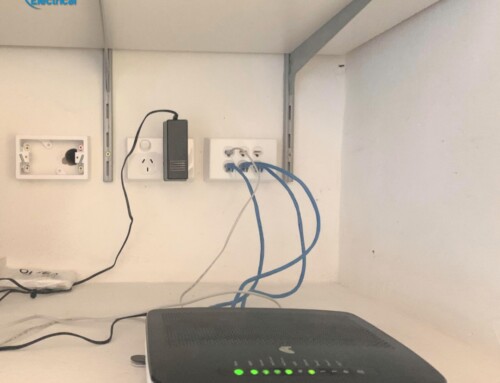Installing cables underground is a tricky job. Not only are you working with electricity chances are you’ll be digging in dirt and dealing with water which as we know, doesn’t mix well with electricity. Below is a case study of a Sydney client who recently got DCN out to help them get power from their mains supply to the rear of their property for lighting.
So we go out to a job to pull cabling through pits at a business in Sydney’s north in the suburb of Ryde. The cabling will be run underground to power lighting in the back of the business. We open 2 out of 10 pit lids and discover they are full of water from the heavy down pours combined with a broken pit lid we find.
We proceeded with opening all the pit lids that the cables will be run through while making sure to barricade off all areas to make sure people do not fall in (safety first). Opening all pit lids also allows any toxic vapours to escape before we commence works! This can be a surprise to non professional electricians but these pits can fill with gases (some flammable) that can present dangers to anyone working in or on them.
We leave some of the team on site to set up all the cabling that will be pulled through and the draw ropes. I set off to get a generator and pump to pump out the water that’s leaked into the cabling pits. We discover that there were in-fact two bildge pumps installed with ‘float switches’ on either end of the pit system. Unfortunately for us and the client, they were both faulty which is why the cabling pits were full of water. Now most people would associate water and electricity as a danger and this is correct unless the proper pit cabling or ‘submersible cables’ are used.
How do you think electricity and phone lines etc get to places like islands etc??
You can even do joints with water tight joints and epoxy types resins.
This though is best left to the experts who do it every day!
So now with the pits emptied of water and any gas vapours we are finally able to get the Cables and draw ropes pulled in and all pit lids cleaned and greased up before reinstating them so on the next visit or for the next contractor it is easier to lift up and hopefully not full of water.










